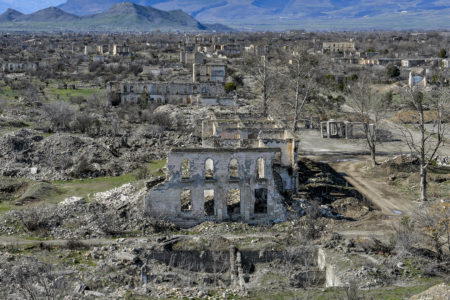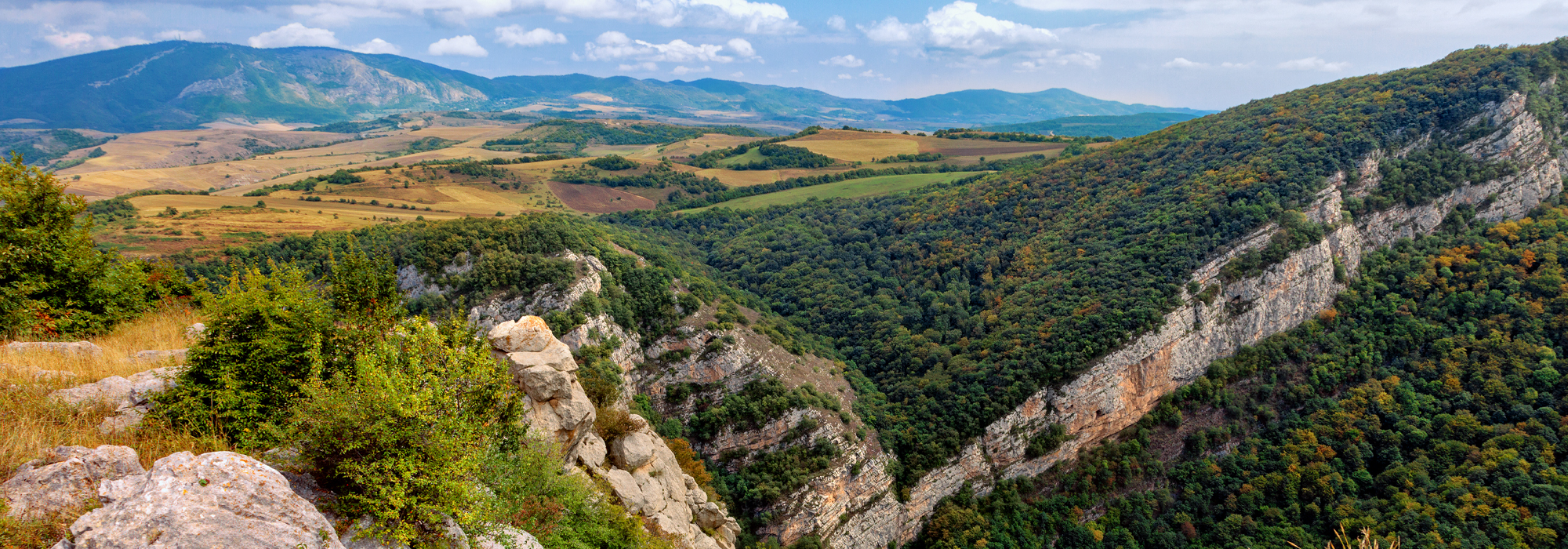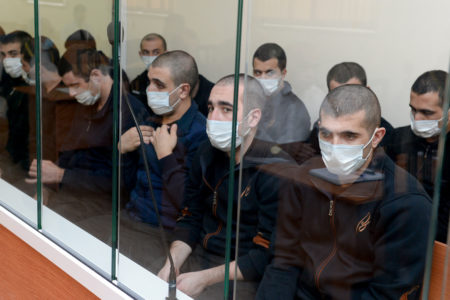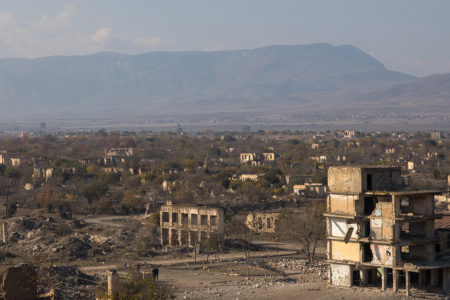
A recent Policy Options op-ed by Sheila Paylan and Vrouyr Makalian, “Canada’s responsibility in the Nagorno-Karabakh crisis,” contains some basic mistakes and misunderstandings.
The authors refer to the so-called “Republic of Nagorno-Karabakh” as “a breakaway state predominantly inhabited by ethnic Armenians since time immemorial.” But the Nagorno-Karabakh region never existed as a political entity before the early 1920s. It was created under early Soviet rule and called “Nagorny” (or “Nagorno-” in the hyphenated form) – Russian for “mountainous” – because it had historically always been regarded as part of a larger Karabakh region stretching roughly from the current Armenian border in the west to the Azerbaijani lowlands in the east.
The so-called “Republic of Nagorno-Karabakh” was never a breakaway state. Indeed, it was never a state; and not even Armenia ever recognized its supposed independence. The 1933 Montevideo Convention on the Rights and Duties of States, in its Article 1, defines the four criteria for statehood: a permanent population, a defined territory, a government and the capacity to enter into relations with other states. Of these, the so-called “Republic of Nagorno-Karabakh” never possessed the first, second or fourth.
For three decades, the Armenian side entrenched itself on Azerbaijan’s territory while pretending to seek settlement by intermediation of the Minsk Group, the part of the Organization for Security and Co-operation in Europe (OSCE) tasked with finding a peaceful solution to the conflict. This subterfuge was fully unmasked by Armenian Prime Minister Nikol Pashinyan himself with his August 2019 effective denunciation of the Minsk Group’s “Madrid Principles,” when he provocatively declared that “Artsakh” (what Armenians call Nagorno-Karabakh to imply its independence) “is Armenia and that’s it.”
The Madrid Principles, named for the city where the OSCE met and adopted them in 2007, had been the agreed basis for negotiation with Azerbaijan by every other Armenian government since their formulation. They were updated in 2009. They included the return to Azerbaijan of occupied territories surrounding the Nagorno-Karabakh region and several other elements for a settlement that the Azerbaijani military operation (along with the conditions of the Russian-mediated ceasefire) has effectively realized.
Azerbaijan did nothing other than to apply the UN Charter’s Article 51, on the right of self-defence so as to put into effect the four resolutions of the UN Security Council (UNSC) from 1993, after the international community had failed for 30 years to resolve the situation where its lands were occupied by foreign military forces.
Other misrepresentations of fact include:
- The authors assert without proof that “Azerbaijan and Turkey initiated a large-scale, unprovoked war.” Not only is it false that Turkey attacked Armenia and that the war was unprovoked. This conflation of Azerbaijan and Turkey is, moreover, typical of a certain Orientalism that one might hope should be absent from Canadian political discourse.
- The authors’ words that “Azerbaijan’s anti-Armenian rhetoric has only intensified” would be ironic if they were not tragic. Armenia ethnically cleansed and expelled 250,000 Azerbaijanis in 1987, before the government of the Armenian Soviet Socialist Republic launched the First Karabakh War over 30 years ago.
- The claim that Azerbaijani state doctrine embodies an “irredentist philosophy that Armenian territory constitutes historic Azerbaijani land” is mirror-imaging. It was Pashinyan who not only claimed that the Nagorno-Karabakh region is Armenia but also implied territorial claims against Turkey by calling the 1920 Treaty of Sèvres, which never entered into force, “historic fact” and “historic justice.”
The argument that possible Canadian recognition of the so-called “Republic of Nagorno-Karabakh” for humanitarian purposes has a precedent in the case of Bangladesh is also false. That decision for humanitarian aid was taken in June 1971 and delivery began immediately. Canada did not recognize Bangladesh until February 1972, principally for unrelated reasons of national interest.
Such a diplomatic move would also contravene international law and the rules-based order. The United Nations Security Council (UNSC) has always affirmed the territorial integrity of Azerbaijan. In four separate resolutions dating from 1993, the UNSC called for “the immediate complete and unconditional withdrawal of the occupying forces involved from [name of newly occupied district here] and all other recently occupied areas of the Azerbaijan Republic.” (emphasis added)
The authors assert that the current situation makes the prospect of renewed attack by Azerbaijan more than likely. However, the implemented cease-fire provides for nearly 2,000 Russian troops on the ground in the role of peacekeepers for a minimum period of five years, making any renewed attack by Azerbaijan perhaps less rather than more likely.
As I have suggested elsewhere, if Canada should wish to make a better contribution to reconstruction, peace-building and stability in the South Caucasus, then Ottawa, rather than engage in provocative and useless diplomatic gestures, should initiate a broad dialogue with Azerbaijan.
Photo: The hills near the city of Shusha in Nagorno-Karabakh. Shutterstock.com, by Gromwell.







